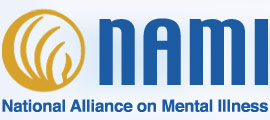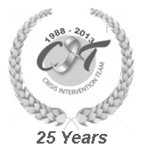TIME Magazine www.time.com
Friday, Aug. 07, 2009
By Maia Szalavitz
Parents have always warned teenagers against falling in with the wrong crowd, those kids they consider bad influences. Now a new study of juvenile detention in Montreal adds to the evidence that Mom and Dad may have a point.
Researchers found that rather than rehabilitating young delinquents, juvenile detention — which lumps troubled kids in with other troubled kids — appeared to worsen their behavior problems. Compared with other kids with a similar history of bad behavior, those who entered the juvenile-justice system were nearly seven times more likely to be arrested for crimes as adults. Further, those who ended up being sentenced to juvenile prison were 37 times more likely to be arrested again as adults, compared with similarly misbehaved kids who were either not caught or not put into the system. (Read “Getting the Juvenile-Justice System to Grow Up.”)
“It’s much worse than we would have expected,” says Richard Tremblay, a psychology professor at the University of Montreal and a co-author of the study, which was published in the Journal of Child Psychology and Psychiatry. “By having them live together, they form relationships. It’s more likely to increase the problem.”
The 20-year study followed 779 low-income youth in Montreal with annual interviews from age 10 to age 17, then tracked their arrest records in adulthood. Researchers also interviewed the teenagers’ parents, schoolmates and teachers. The study accounted for variables such as family income, single-parent-home status and earlier behavior problems (such as hyperactivity) that are known to affect delinquency risk. (See pictures of crime in Middle America.)
Kids who entered the juvenile-justice system even briefly — for example, being sentenced to community service or other penance, with limited exposure to other troubled kids — were twice as likely to be arrested as adults, compared with kids with the same behavior problems who remained outside the system. Being put on probation, which involves more contact with misbehaving peers, in counseling groups or even in waiting rooms at probation offices, raised teens’ odds of adult arrest by a factor of 14.
The rehabilitation of troubled teens has long been a contentious issue, pitting the individual needs of problem children and families against a system that does not typically give social workers adequate tools or resources to help. Often, the treatment of difficult or drug-using teens occurs en masse — in residential homes, for example — but instead of scaring kids straight, the group experience tends to glamorize delinquency and drug use. (Read “Teens Behaving Badly?”)
Why? In any such setting, teens establish a predictable social hierarchy, says Tom Dishion, director of research at the Child and Family Center at the University of Oregon, who was not involved with the study. The kids who have behaved worse than others — committing robbery, for instance, vs. smoking cigarettes — earn the most credibility with their peer group, which encourages further bad behavior. “That story [about robbing someone] has a function of making that kid more interesting. He or she gets a lot of attention. [These kids] become higher in the social hierarchy.”
Says Tremblay: “There is that competition of who is going to do the worst stuff — for them, it’s the best stuff — like stealing the biggest or best car.”
Past research has also shown that peer exposure can worsen behavior. In a 1995 study conducted by Dishion involving 158 high-risk families in Oregon, researchers compared the impact on teens’ behavior of four interventions: parenting groups focused on effective discipline, social-skills-training groups for teens, both the parent- and teen-focused group interventions, or no group treatment at all. Overall, the parent-focused group was most effective, leading to reductions in teen smoking and misbehavior at school. The teen-focused group, by contrast, significantly increased participants’ rate of aggressive behavior and smoking; in the combination group, kids showed no improvement, presumably because the exposure to other teens canceled out the positive effect of the parents.
The new study supports these findings, suggesting that family therapy or one-on-one counseling — or any intervention that doesn’t aggregate troubled teens — is safer and more likely to be effective than group activities. But if groups must be used, experts say that high supervision and low child-to-staff ratios are essential to minimize the risk of behavior contagion.
“I think it’s a very important finding, and it’s consistent with other research in the last 10 years on this topic,” says Dishion. “What’s really surprising is that we don’t have more research showing this to be true. Almost everyone you tell about these findings who has worked in [residential or juvenile-justice settings] is not surprised. I think there’s a tacit agreement not to look too carefully.”






